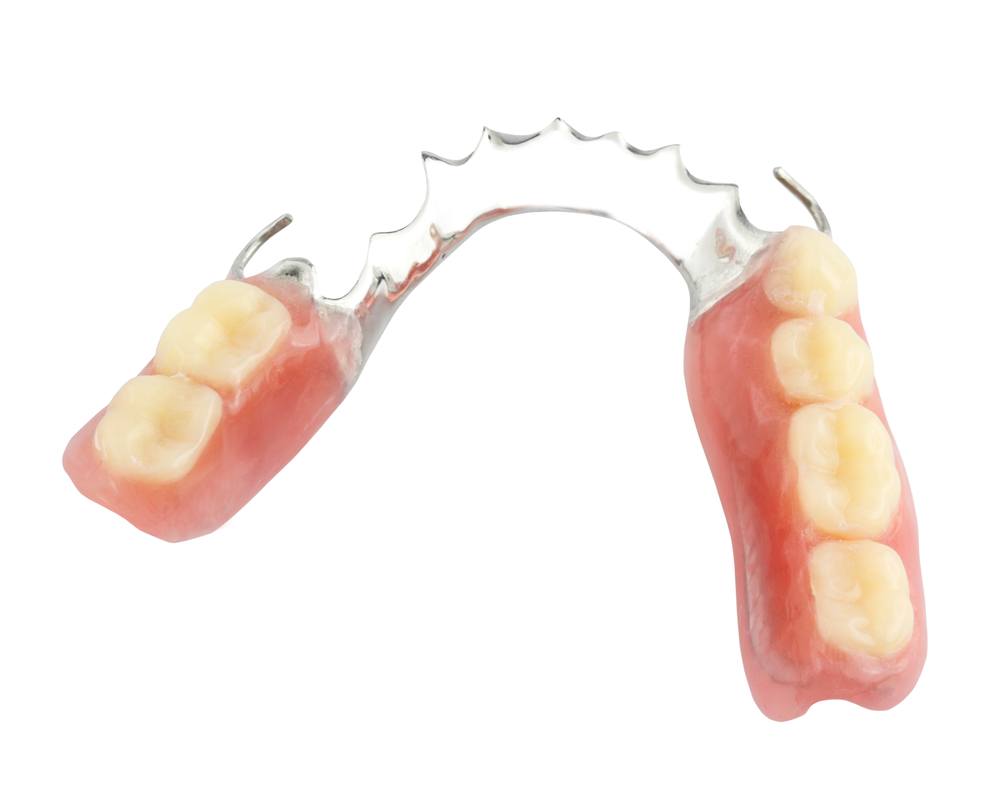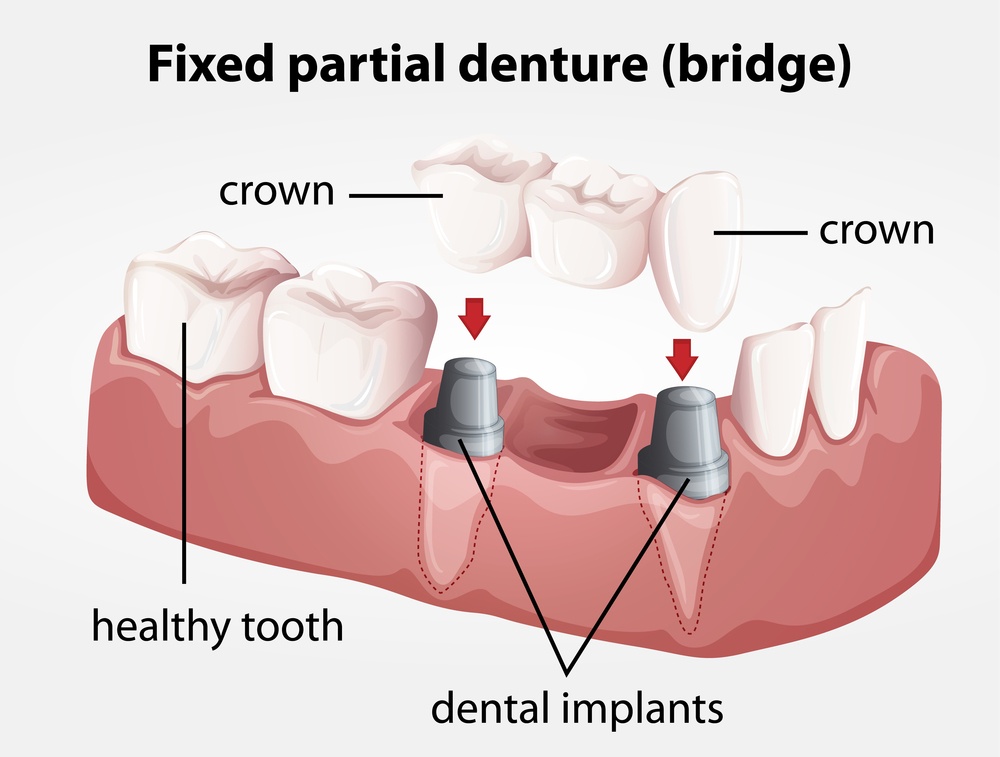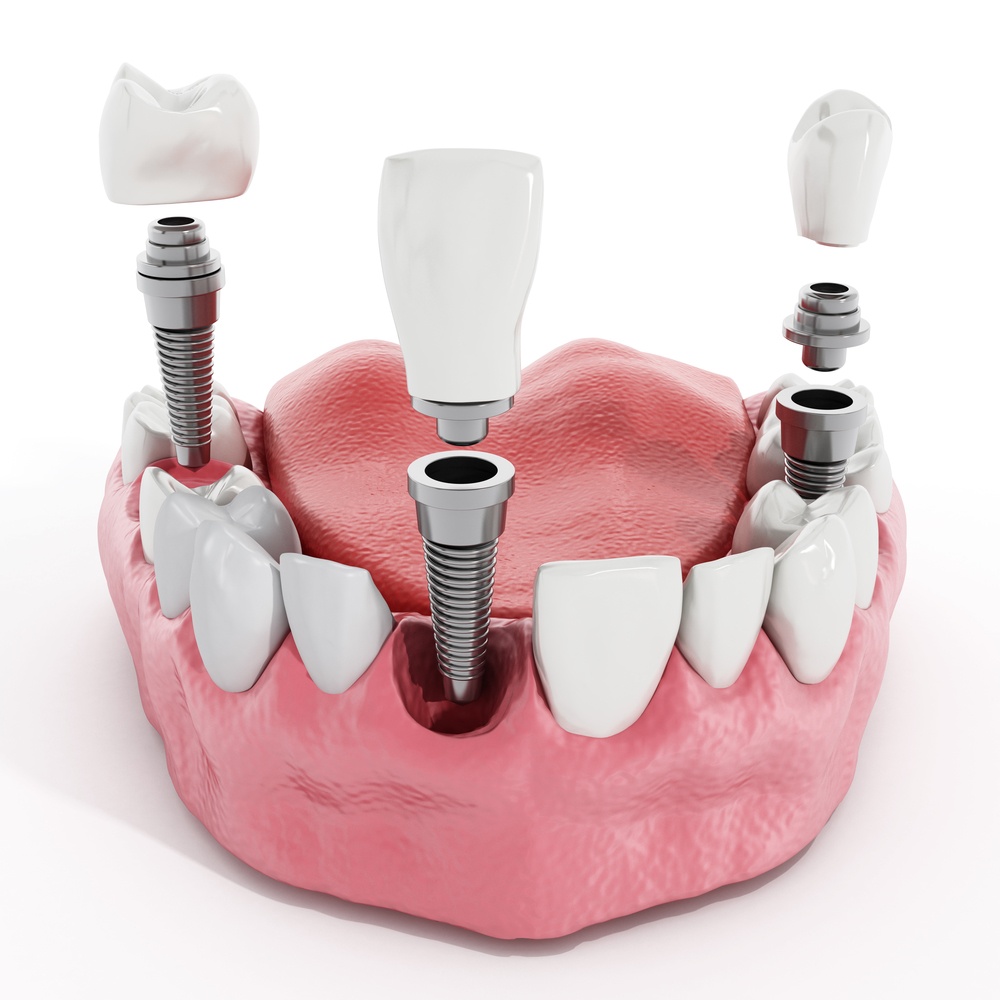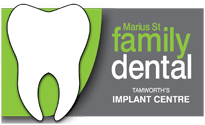Treatment Options For Restoring Missing Teeth
1. Nothing – no restoration. Leave everything as it is
This is the cheapest, easiest option. You don’t even need to see us! However, there are a few downsides to doing nothing, of course.
- One is the body doesn’t keep anything it doesn’t need. Once you lose the root of a tooth, your body will start to resorb (take away) the bone that was supporting that tooth. The width can decrease about 50% in the first year. So, if you decide to replace it in the future, it gets harder and more expensive. If it is a top tooth, your sinus floor drops down slowly as well
- All the other teeth shift and change. The teeth next door will tilt into the gap, and the tooth opposite will continue to grow down (overerupt). This will change your bite, and is particularly bad if you have a really nice smile currently
- Teeth come in pairs (top one and a bottom one), so if you lose one of them, youre essentially losing the function of both. Ask your dentist to assess whether the other tooth is biting with any other teeth as this will determine how much it will keep growing down
- Doesn’t look good – especially if it is visible in your smile
- There are only so many teeth you can lose before it begins to affect your ability to chew and enjoy your food. We believe food is one of the greatest joys in life, so please don’t take this decision lightly
- Advantage is that they are the cheapest way of replacing multiple missing teeth. If they are plastic, they can be added to easily, so if you lose any more teeth, we can use your old denture. This is not true for metal dentures, however
- Your ability to chew efficiently is decreased compared to natural teeth or the other replacement options. The force at which you’re able to bite with is significantly decreased (200 psi to 50 psi). Food choices and diet is affected. It is hard to measure, but we believe that dentures have a negative effect on quality of life. Obviously, this depends on the patient and their ability to adapt to wearing dentures
- Dentures also move and ‘flip’ in the mouth. No matter how well the denture is made
- After losing a tooth, the bone shrinks rapidly. Unfortunately, this process continues for the rest of your life. This means the longer you have dentures, the less bone you have to hold your dentures in
- There is always an adaption process after dentures are given to a patient. Usually this takes around 3 months. The muscles actually chew differently when dentures are in. However, unfortunately, sometimes patients never adapt to their dentures
- Advantage is that they are the cheapest way of replacing multiple missing teeth. If they are plastic, they can be added to easily, so if you lose any more teeth, we can use your old denture. This is not true for metal dentures, however
- Your ability to chew efficiently is decreased compared to natural teeth or the other replacement options. The force at which you’re able to bite with is significantly decreased (200 psi to 50 psi). Food choices and diet is affected. It is hard to measure, but we believe that dentures have a negative effect on quality of life. Obviously, this depends on the patient and their ability to adapt to wearing dentures
- Dentures also move and ‘flip’ in the mouth. No matter how well the denture is made
- After losing a tooth, the bone shrinks rapidly. Unfortunately, this process continues for the rest of your life. This means the longer you have dentures, the less bone you have to hold your dentures in
- There is always an adaption process after dentures are given to a patient. Usually this takes around 3 months. The muscles actually chew differently when dentures are in. However, unfortunately, sometimes patients never adapt to their dentures
Problems with removable partial dentures
- Low survival rate – 60% at 4 years. 35%survival rate at 10 years. Having a mix of denture teeth and natural teeth tends to decrease the denture survival time as the natural teeth exert a lot more force onto the denture
- Repair of abutment teeth rate-60% at 5 years and 80% at 10 years. This means that the teeth that are used to hold the dentures in (we call them ‘abutment teeth’) suffer more decay, wear and “stripping” (where the gum gets damaged from the clasps). We find the teeth that we use to support the dentures are at more risk of being loose, having disease and bacterial build up
- 44% abutment teeth loss within 10 years
- Accelerated bone loss in edentulous region if wearing removable partial denture
3. Bridges (aka fixed partial denture)
Please see our website for more information as to what a bridge is, as there are several types. Generally, a bridge is 2-3 crowns connected to eachother. By crowning one or two of your remaining teeth, we can replace your missing tooth with a ‘crown’ that is then supported by your other tooth. It just hovers above the gum.
- Estimated mean life span (50% survival) reported at 10 years
- The issue is that a bridge relies on the teeth remaining to hold everything in place. If these teeth fail, then the whole bridge fails, as we join them into one unit. Caries (decay) on the abutment (tooth holding the bridge) is the most common cause of failure. 15% of teeth holding the bridge require root canal through the bridge (difficult, often a specialist is asked to do this)
- The other downside is that we need to crown the teeth next to the gap in order to get the support. If they don’t have big fillings, then often they are actually getting more damaged in this process. However, if the teeth next door have lots of fillings and would benefit from a crown, a bridge may be something we will consider as a good option
See our website for more information. An implant is a titanium screw placed into the jaw bone to mimic the root of a tooth. The jaw bone fuses to it as it heals. Then we put a crown on top.
Advantages of single tooth implant
- Highest success rate (better than 97% for 10 years)
- Decreased risk of caries or endodontic (nerve) problems on adjacent teeth when compared to bridges and dentures
- Doesn’t damage the adjacent teeth. This is really important. It is a unit independent of the other teeth. So if the other teeth have issues, the implant does not rely on them for its success
- You can still floss and brush your teeth as per normal – so keeping good oral hygiene is easier
- Psychological advantage – treat it similarly to your natural teeth. They look great as well, and you never have to feel worried about laughing too hard and your teeth falling out
- Keeps the other teeth in their positions (stops the tilting and movement we talked about earlier)
- Keeps good muscle tone (muscles don’t have to adapt like they do in dentures) and allows you to maintain the muscles of chewing and facial expression
- Gives you great appearance, chewing function and force, and does not interfere with speech (dentures do)
- You can also do implant supported bridges (when you want to replace multiple teeth)
5. Implant supported/retained dentures
This is like a cross between dentures and implants (above). Rather than putting a crown on top of the implant screw, we put a denture. The implant is used to help keep that denture in. This is a more affordable way to replace many missing teeth, without having as many negatives as normal dentures. The advantages are..
- Increased prosthesis success. Improved stability and retention of removable prostheses (they don’t fall out and flop around so much) meaning increased comfort
- Improved chewing performance and maintenance of muscle of mastication and facial expression
- Reduces size of the denture (you don’t have to have them so bulky)
- Increased survival times of prostheses (they last longer because the forces are distributed better)
- Elimination of need to alter adjacent teeth (lass clasps means less damage to the remaining teeth)
- Altogether this means improved comfort, chewing and psychological health



